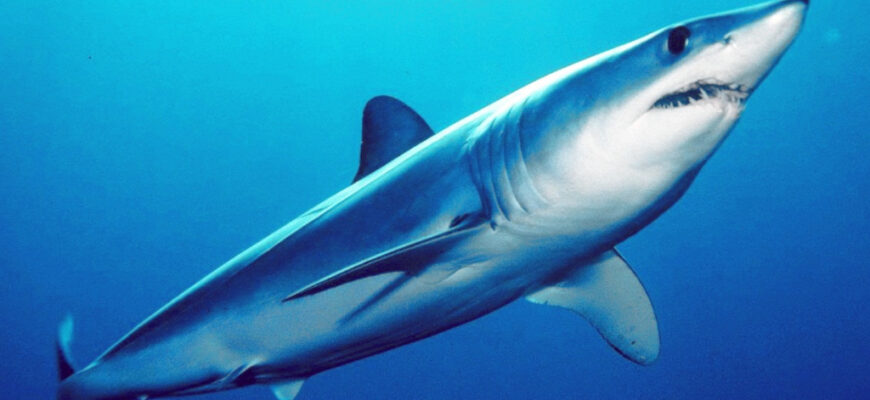Review of the best according to the editorial board. On the selection criteria. This material is subjective and does not constitute advertising and does not serve as a purchase guide. Before buying, you need to consult with a specialist.
The depths of the seas and oceans hide many interesting things from human eyes, including a magnificent variety of representatives of the aquatic fauna, most of which are fish. Which fish are the largest? We invite you to find out about the ten largest representatives of this group. It may surprise some that there are no such huge animals as whales in the collection, but there is a simple reason for this – whales, with all their external resemblance to fish, are not such, but belong to the class of mammals.
Rating of the largest fish in the world
| Nomination | a place | name | rating |
| 10 largest fish in the world | 10 | Shark Mako | 4.1 |
| 9 | Blue marlin | 4.2 | |
| 8 | Greenland polar shark | 4.3 | |
| 7 | Beluga | 4.4 | |
| 6 | Tiger shark | 4.5 | |
| 5 | Great white shark | 4.6 | |
| 4 | Moon fish | 4.7 | |
| 3 | Manta | 4.8 | |
| 2 | Giant shark | 4.9 | |
| 1 | Whale shark | 5.0 |
Shark Mako
Rating: 4.1
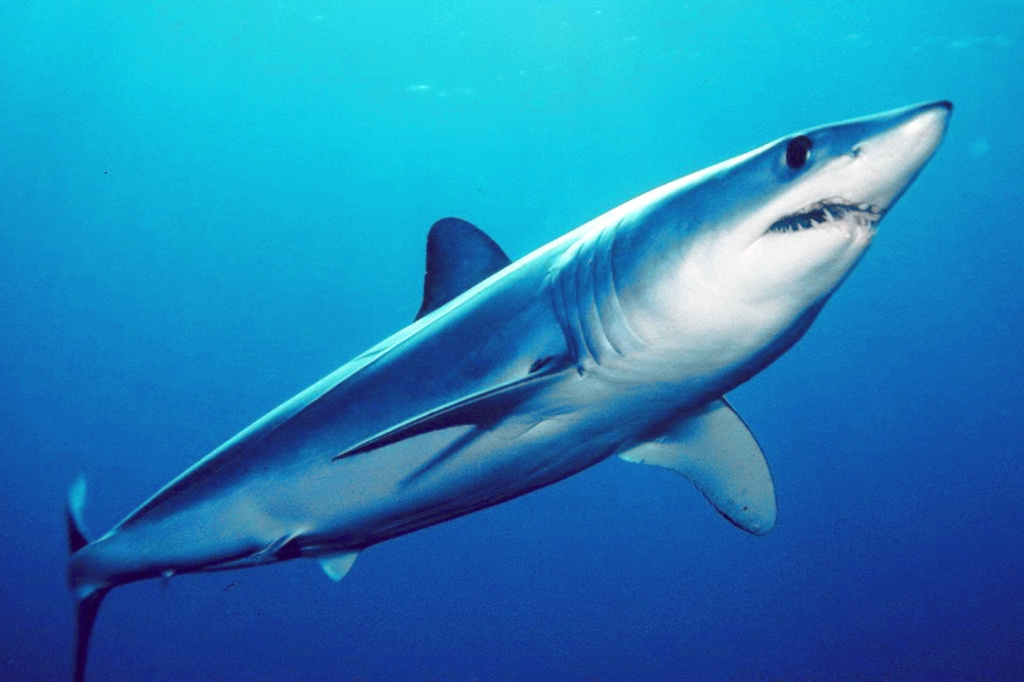
A large and dangerous predator that lives in the waters of the Pacific, Atlantic and Indian Ocean. These sharks can grow up to four and a half meters in length and weigh over 550 kilograms. The name “mako” was given to her by the representatives of the Maori tribe, her name is also gray-blue herring and black-snout shark. Mako prefer warm tropical and temperate waters, can be found both in the open sea and in the immediate vicinity of the coast.
These sharks are notorious for being aggressive towards humans, although studies have shown they do not view humans as potential prey. Most often, overly curious divers or fishermen become victims (there are cases when sharks even jumped aboard boats). Although due to the Mako's tendency to swim into the coastal zone, ordinary tourists are sometimes exposed to danger.
While searching for food, mako sharks, as a rule, stay close to the surface of the water, sinking no deeper than 150 meters. They are excellent hunters – their thin, extremely sharp, inwardly curved teeth are ideal for grabbing prey, and their high mobility and streamlined elongated body shape with short fins allows them to easily reach a constant speed of 35 km / h. During short throws for prey, the shark can move at a speed of 75 km / h and jump out of the water to a height of six meters.
Blue marlin
Rating: 4.2
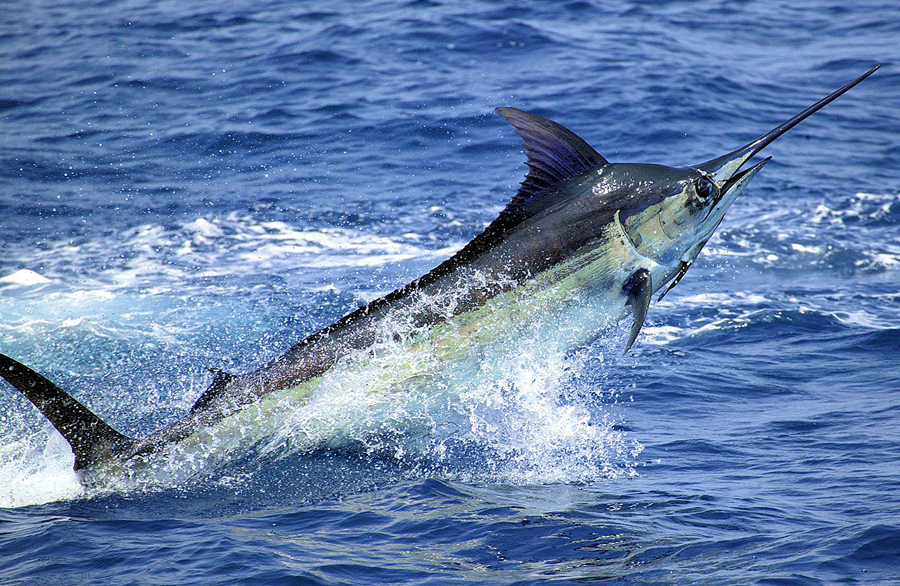
Blue marlins are found in the warm waters of the Atlantic, especially in tropical regions. The largest of the individuals reach five meters in length and weigh more than 800 kilograms. The body of the marlin has a blue or blue tint, on the head there is a so-called spear, a very strong and long process of the jaw, which makes up to 20% of the total body length. Fish skillfully use their “weapon” in the process of hunting, crashing into a school of small fish and inflicting wounds on them.
As a rule, large blue marlins prefer to swim alone, and only smaller individuals can gather in groups of 5-10 individuals. During seasonal migrations, they swim a distance of over 11 thousand kilometers, swimming at a speed of about 70 km per day.
Blue marlins are not very caring parents, their fry grow on their own, most often being eaten by other predators. But those who manage to avoid such a fate grow at a very fast pace (up to 16 mm per day) until reaching a length of one and a half meters, then growth slows down. Females grow longer and are larger in size, exceeding males by several times. Despite their formidable appearance, marlins are quite peaceful and calm animals. Their only enemy in wildlife are large sharks.
This fish is very much appreciated by fishermen; hunting for it is even considered a separate type of sport fishing. In addition, its meat is considered a delicacy and is especially appreciated by lovers of Japanese cuisine.
An interesting fact – the image of a blue marlin is present on the official coat of arms of the Bahamas.
Greenland polar shark
Rating: 4.3
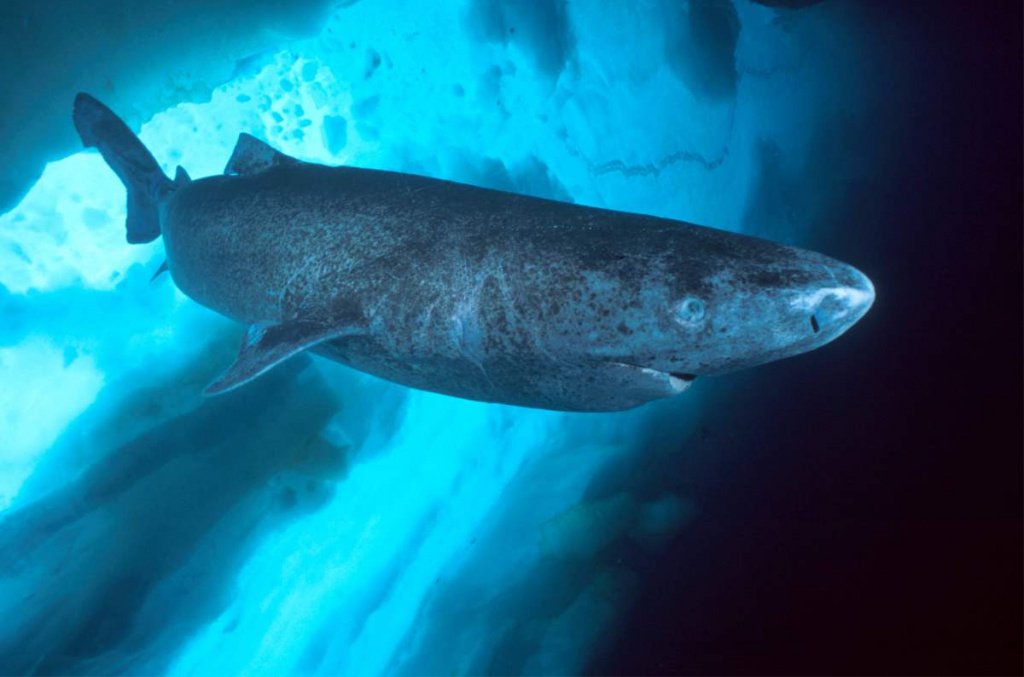
As the name suggests, the polar shark is found in the cool waters of the North Atlantic Ocean, and is especially common near Norway, Greenland and Iceland.
Sharks grow to a maximum length of six and a half meters, while their weight is about a ton. This species is distinguished by its excellent adaptability to living in the cold – they can quite comfortably swim in water, the temperature of which ranges from one to seven degrees Celsius. In winter, sharks stay close to the surface, while in summer, when the water warms up a little, they go down to a depth of 500 meters. Trimethylamine secreted by the body, which acts as a natural antifreeze and prevents blood thickening, allows the Greenland shark to survive in cold water. A curious feature is the absence of kidneys and urinary tract; urea is excreted from the body simply through the skin. This makes their meat practically unsuitable for food, so sharks are of little interest to fishing. On the other hand, their population is declining at the hands of poachers who hunt for the liver, which makes up 20% of the total body weight and is used to extract technical fat.
Despite its slowness and phlegm, the polar shark is a formidable predator. Prey can be not only large fish, but also seals, and sometimes even polar bears.
Beluga
Rating: 4.4
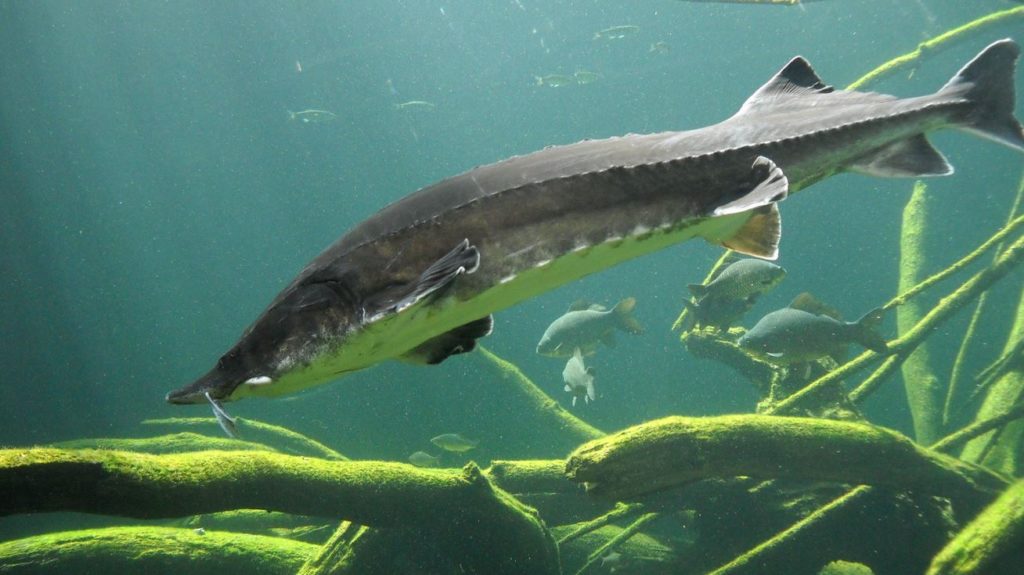
Beluga is not only one of the sea giants, but also the largest freshwater fish. Some individuals prefer to live in river waters, while most choose the sea. But both those and others spawn exclusively in clean fresh water. Beluga lives in the Black, Azov and Caspian seas. Its body is distinguished by the presence of sharp bony protrusions stretching along the sides of the fish. She has an excellent sense of smell thanks to her large antennae, but her teeth are missing altogether. So the beluga simply swallows its prey. The diet includes a variety of shellfish, sea worms, but most often fish. Although there were times when large individuals swallowed seal pups.
The largest representatives of the species weigh one and a half tons and are more than four meters in length. But the beluga can grow to such a size only in the sea, since freshwater does not contain enough food to gain such a mass.
Under normal conditions, belugas live for a long time, sometimes up to 100 years, while growth continues almost throughout their life. Unfortunately, most of the fish are less than half their duration due to poachers, since beluga caviar and tender meat are highly prized on the black market. The cost of caviar reaches several thousand euros per kilogram. In view of this, the beluga is listed in the Red Book, and its catch is strictly prohibited.
Tiger shark
Rating: 4.5

Tiger sharks, also called leopard sharks, owe their name to the unique spotted coloration that covers the upper part of their body. Representatives of the species live in tropical and subtropical waters of the Pacific Ocean, often swim to coastal shallow waters. These sharks love warmth, and throughout the year they migrate following the movement of warm currents.
Reaching five and a half meters in length and weighing 1,500 kilograms, the tiger shark is an extremely dangerous predator. Most of the diet consists of large and small fish, sea snakes, turtles and migratory birds. However, dolphins and even injured whales can also prey on tiger sharks. due to its irrepressible gluttony, this predator does not disdain cannibalism – large individuals often attack their weaker relatives. The tiger shark has the ability to detect low-frequency sound waves and an incredibly keen sense of smell that reacts to the slightest presence of blood in the water. Its main weapon is its sharp teeth, capable of cutting even the shell of a turtle.
There are many known cases of tiger shark attacks on people in the waters of Florida, the Caribbean and especially in Hawaii. However, sharks themselves often fall prey to humans, they are caught for their meat, skins and especially fins.
The main enemy in the natural habitat is, oddly enough, a very small hedgehog fish. Swallowed by a shark, it swells, releasing sharp thorns that pierce the stomach of the predator.
Great white shark
Rating: 4.6
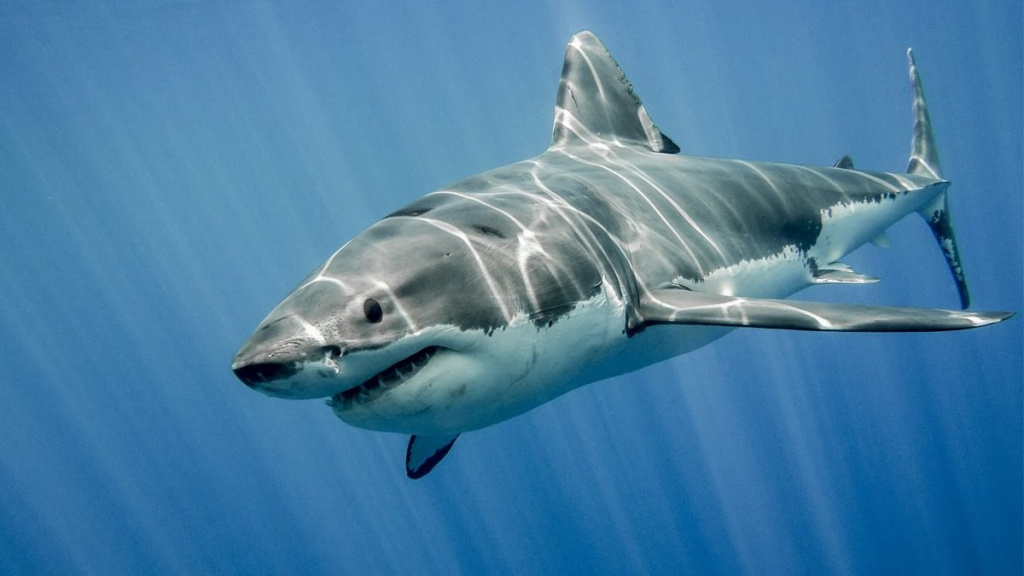
One of the most famous sharks has a very frightening appearance. The predator, reaching six meters in length and two tons in weight, has a streamlined body capable of developing high speed in the water, and its huge jaws with hundreds of sharp teeth have an enormous compression force that can easily bite into the thick bones of marine mammals. In addition, the great white shark is endowed with a special type of light-reflecting cells in the eyes, due to which it can see in the dark, a sensitive sense of smell, and in addition, electrosensory receptors.
This species can be found almost everywhere, except for the Arctic Ocean and cold waters below the southern coast of Australia. It feeds mainly on large fish, as well as seals and sea lions. The great white shark attacks people quite rarely, because it prefers large, fat-rich prey. However, provoked, or too hungry, she becomes a formidable adversary, capable (as shown by the experiments of the Mythbusters) to smash a boat or destroy a shark cage.
Aside from poachers who catch sharks for their fins, which then go to make the infamous soup, killer whales are considered the main enemies of the great white shark. The high intelligence and strength of these mammals often allows them to prevail in skirmishes with sharks.
Moon fish
Rating: 4.7

The beautiful name of the moonfish is due to its bluish-silvery disc-shaped body, devoid of scales. The English version of the name translates as “sunfish”, it was given because of its inherent habit of rising to the surface, it seems like a moonfish love to bask in the sun. In fact, it rises so that the seagulls can extract parasites from under its skin with their beaks. But it does not tolerate excessive heat, a water temperature of more than 10 degrees Celsius can even turn out to be destructive, so that the moonfish spends most of its life at a depth of about 200 meters, away from hot sun rays.
With a length of only about three meters, the weight of representatives of this species can reach 2.2 tons. Despite such an impressive size, the moon fish is vulnerable to predators. Due to its unusual body shape, lack of a hind fin and a swim bladder, it is extremely clumsy and swims slowly. Even in order to turn around, the moonfish has to release a stream of water through its mouth. In view of this, the hunter from her is not particularly skillful, the main part of the diet is siphonophores, jellyfish, squid, eel larvae and small crustaceans.
The moonfish is known as the most prolific fish in the world, producing up to 300 million eggs at a time.
Manta
Rating: 4.8
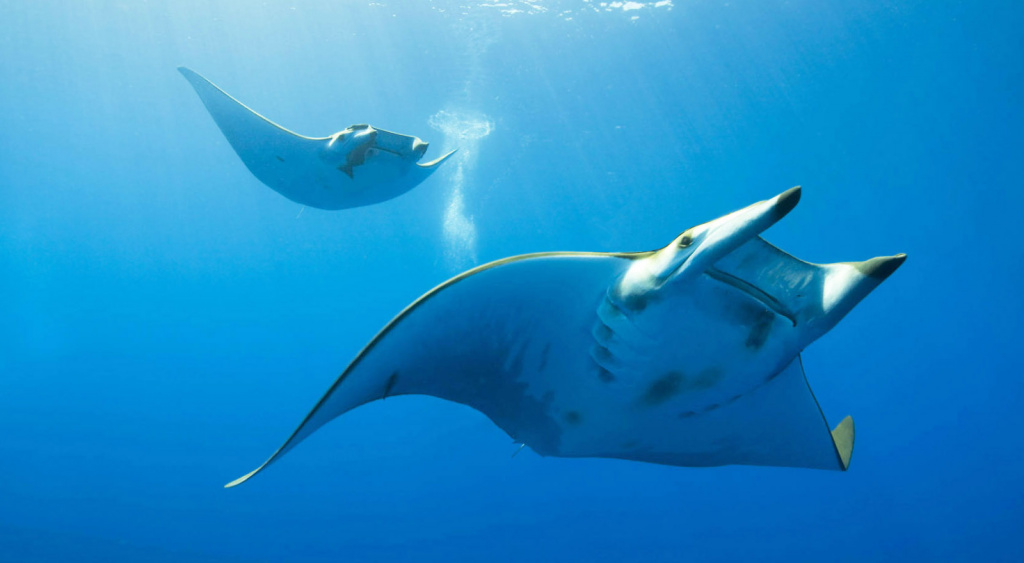
The manta ray is the largest stingray in the world, its “wings” frame reaches 9 meters, and its weight can reach 3 tons. The name manta in translation from Spanish means “cloak”. Before scientists began to study these amazing animals, there was a superstition about them that manta rays could attack divers and drag them to the bottom, clasping them with their large flexible fins, like a cloak. Of course, now it is already known that this type of rays is not dangerous to humans. Their second name – the sea devil, was given for the head fins, which, when swimming, fold into tubes, becoming like horns. These fins play an important role during the hunting of manta rays, with their help it directs a stream of water containing plankton and small fish into the mouth.
Manta rays are very popular with tourists, as they spend most of their time near the surface, and their swimming looks very beautiful, resembling the soaring flight of a huge bird. They also like to jump high (up to 1.5 meters), making a deafening sound when they fall back into the water. Manta rays are notable for their peacefulness and, being curious, often let divers come to them.
Giant shark
Rating: 4.9
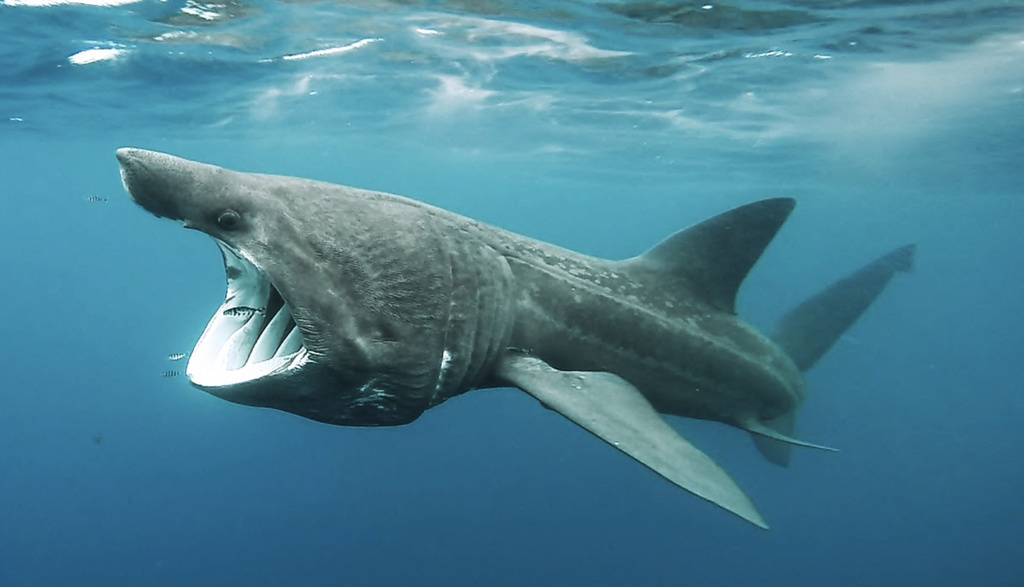
Representatives of this species live in all oceans, preferring temperate waters, and only occasionally swimming in the tropics. Their migration is directly related to changes in the amount of plankton due to seasonal changes in temperatures. Plankton is the main food for these giants. In places of its accumulation, they swim with an open mouth, filtering through their gill slits up to two thousand tons of water per hour. The stomach of a giant shark can hold 500 kilograms of plankton.
Large individuals grow to almost ten meters in length and weigh about 4 tons. Their body is similar to a cigar in shape, and a huge cave-shaped mouth can easily accommodate a person. Of course, these sharks do not hunt people and do not pose any danger at all. However, divers are not advised to touch giant sharks as they are likely to be injured by the sharp growths that cover their scales.
Whale shark
Rating: 5.0
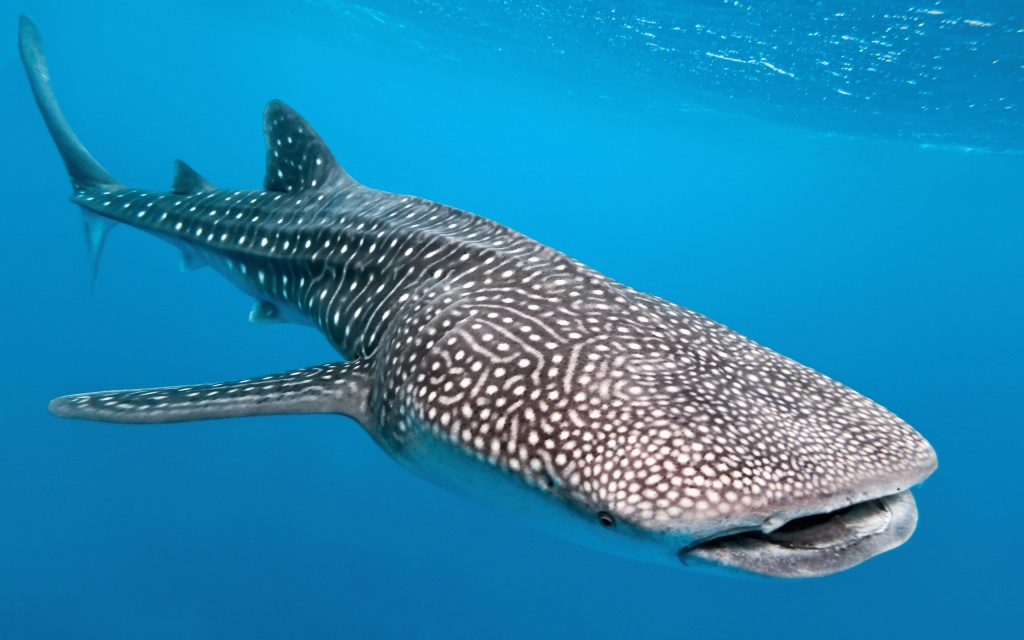
The largest fish in the world, some individuals can reach 20 meters in length and weigh more than 30 tons. This species has an unusual head structure – the mouth is located exactly in the middle of a slightly flattened muzzle, and not in the lower part, like in other sharks. It is equipped with thousands of small teeth, which are really not intended for hunting, but only play a role in the feeding process. The latter, by the way, can take 6-7 hours, at which time the shark filters up to 6,000 cubic meters of water, swallowing plankton and small fish.
Whale sharks prefer to swim in packs in the warm waters of the world's oceans. Most often they can be found near Taiwan, Seychelles, Southeast Africa and the Philippines. They also live near Australia. Like giant sharks, whale sharks make seasonal migrations in search of places rich in food.
Individuals spend most of their time at the surface of the water, sometimes swallowing air so as not to lose their buoyancy. The whale shark has an extremely calm and even apathetic temperament. She swims very slowly, at a speed of about 5 kilometers per hour, making smooth undulating vibrations with the back of her body.
Due to uncontrolled fishing, this species is endangered and listed in the Red Book, and fishing and sale is prohibited by most states. In their natural habitat, adults are practically absent from enemies. However, the population of these sharks grows extremely poorly due to slow reproduction.
Whale sharks are of great interest for tourism, since they are quite calm about divers, allowing them to touch themselves and even ride on their backs, holding on to the upper fin.
Attention! This rating is subjective and does not constitute an advertisement and does not serve as a purchase guide. Before buying, you need to consult with a specialist.

